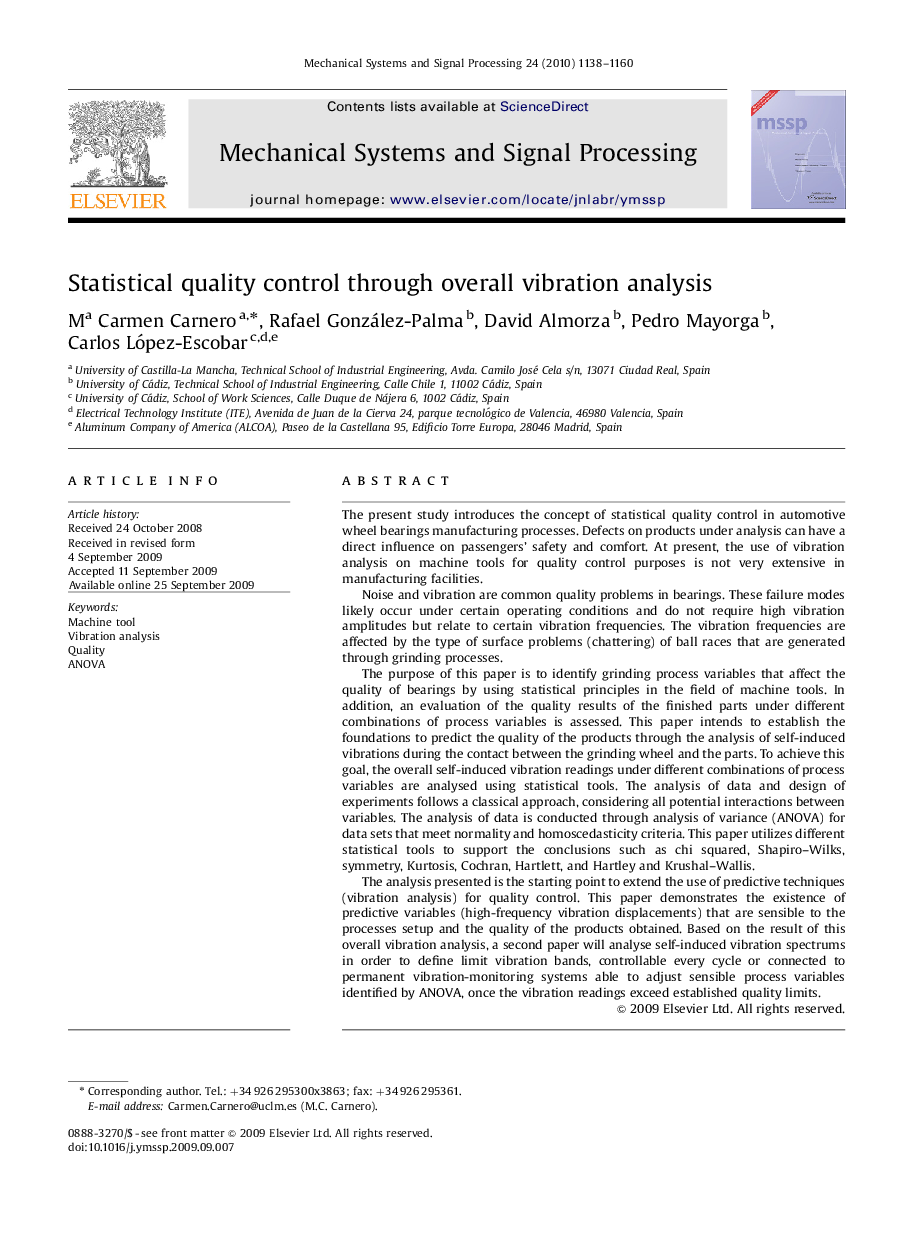| Article ID | Journal | Published Year | Pages | File Type |
|---|---|---|---|---|
| 561767 | Mechanical Systems and Signal Processing | 2010 | 23 Pages |
The present study introduces the concept of statistical quality control in automotive wheel bearings manufacturing processes. Defects on products under analysis can have a direct influence on passengers’ safety and comfort. At present, the use of vibration analysis on machine tools for quality control purposes is not very extensive in manufacturing facilities.Noise and vibration are common quality problems in bearings. These failure modes likely occur under certain operating conditions and do not require high vibration amplitudes but relate to certain vibration frequencies. The vibration frequencies are affected by the type of surface problems (chattering) of ball races that are generated through grinding processes.The purpose of this paper is to identify grinding process variables that affect the quality of bearings by using statistical principles in the field of machine tools. In addition, an evaluation of the quality results of the finished parts under different combinations of process variables is assessed. This paper intends to establish the foundations to predict the quality of the products through the analysis of self-induced vibrations during the contact between the grinding wheel and the parts. To achieve this goal, the overall self-induced vibration readings under different combinations of process variables are analysed using statistical tools. The analysis of data and design of experiments follows a classical approach, considering all potential interactions between variables. The analysis of data is conducted through analysis of variance (ANOVA) for data sets that meet normality and homoscedasticity criteria. This paper utilizes different statistical tools to support the conclusions such as chi squared, Shapiro–Wilks, symmetry, Kurtosis, Cochran, Hartlett, and Hartley and Krushal–Wallis.The analysis presented is the starting point to extend the use of predictive techniques (vibration analysis) for quality control. This paper demonstrates the existence of predictive variables (high-frequency vibration displacements) that are sensible to the processes setup and the quality of the products obtained. Based on the result of this overall vibration analysis, a second paper will analyse self-induced vibration spectrums in order to define limit vibration bands, controllable every cycle or connected to permanent vibration-monitoring systems able to adjust sensible process variables identified by ANOVA, once the vibration readings exceed established quality limits.
